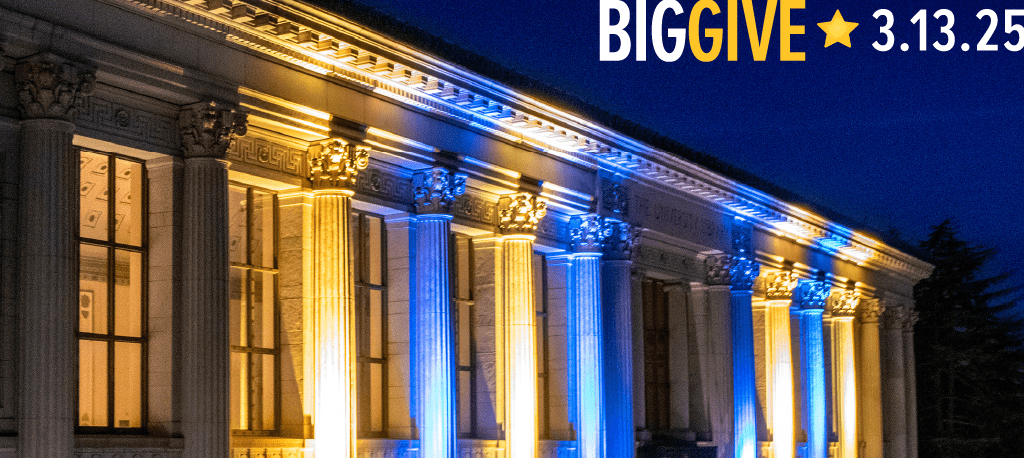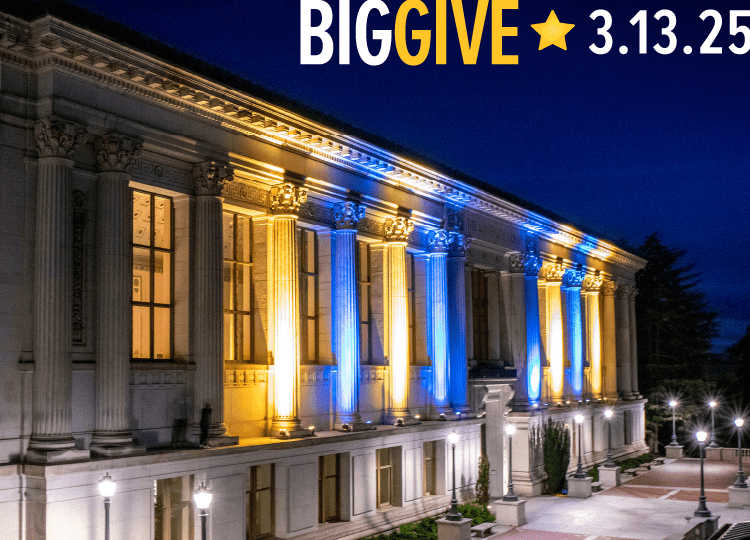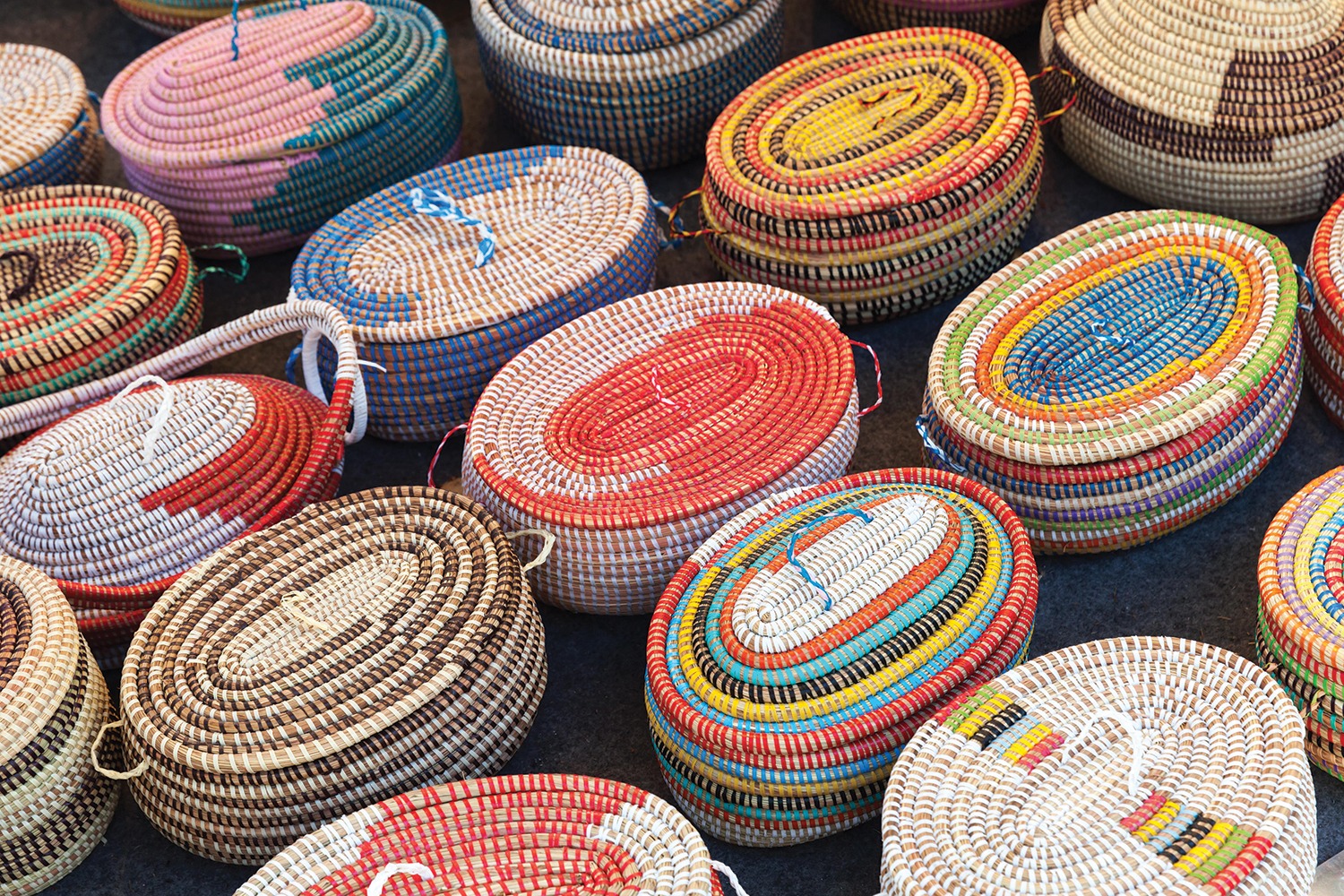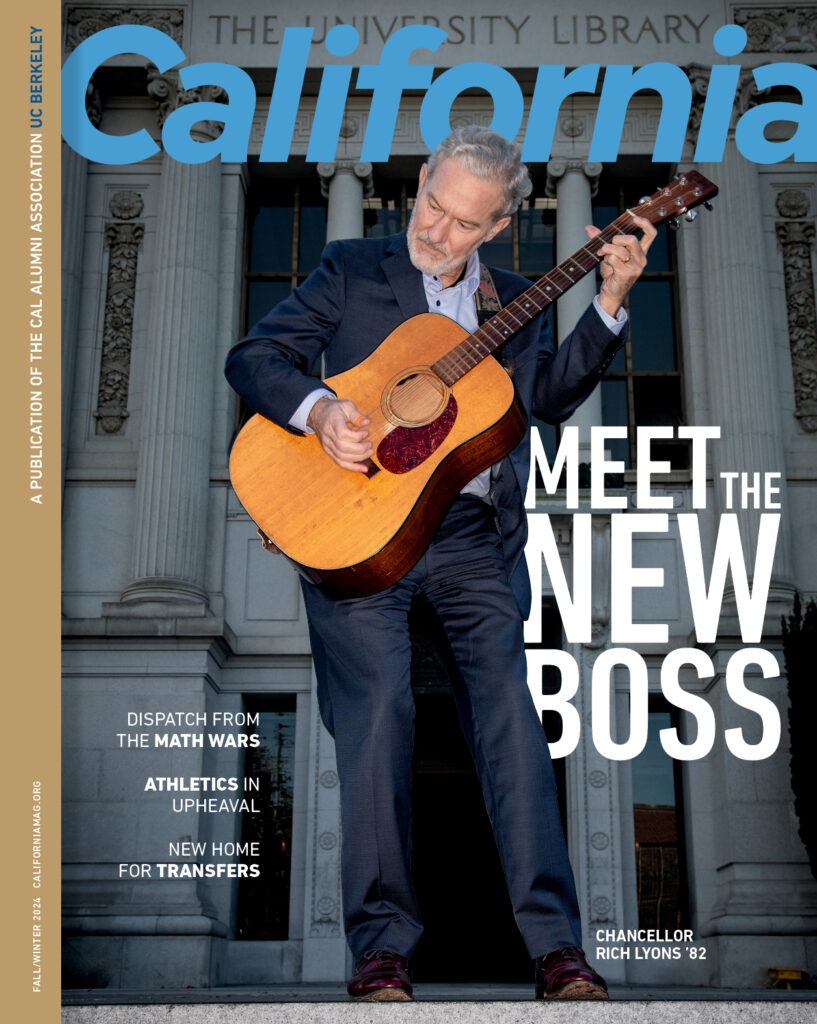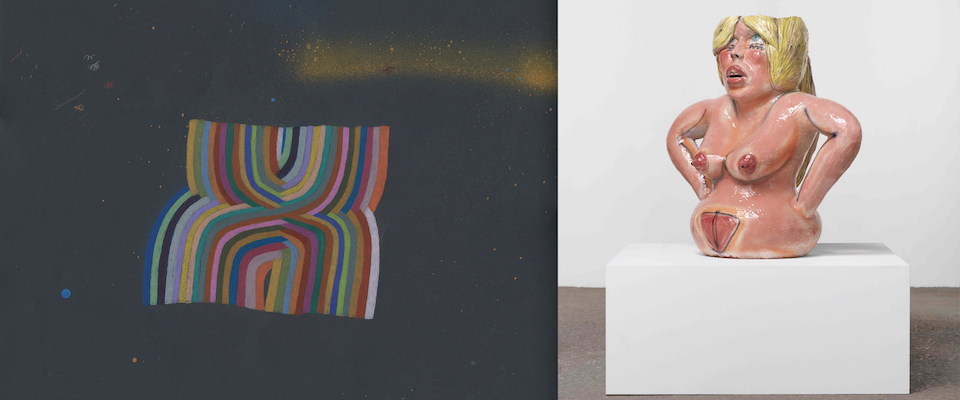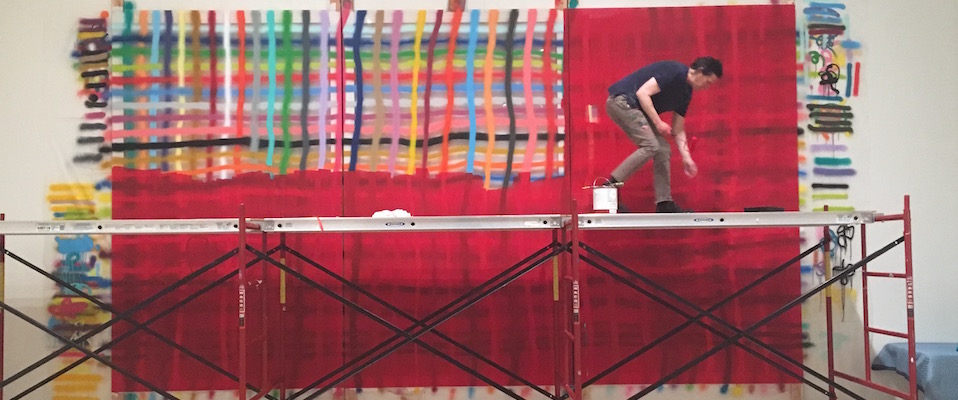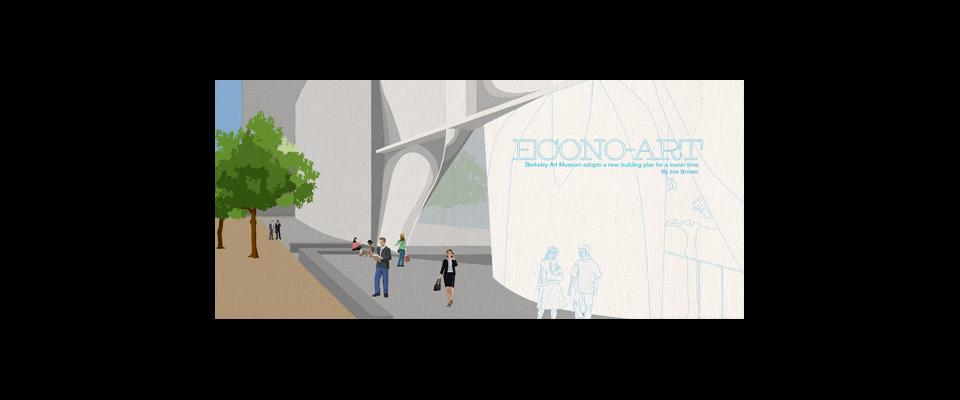At first glance, the work of Alicia McCarthy and Ruby Neri couldn’t be more different. McCarthy’s intersecting swaths of color, “weaves” as she calls them, are hypnotizing and prismatic, calling to mind 1960s Op Art. In contrast, Neri’s recent body of work is quite literally that: giant ceramic figures—mostly female nudes—in striking, even grotesque postures.
But, explains Apsara DiQuinzio, Modern and Contemporary Art curator at Berkeley Art Museum (BAM), the connections between their work are not always evident in what meets the eye.
“Alicia primarily works with abstraction, and Ruby primarily works with figuration. But there is a kind of similar aesthetic approach that they share,” DiQuinzio said. “They both are very interested in a kind of immediacy and spontaneous, intuitive approach. And they also refer to it as being kind of raw.”
McCarthy and Neri first met in 1990 as students…and according to McCarthy, they just “lit each other up.”
That shared approach can be linked to McCarthy’s and Neri’s shared artistic history, one that spans more than a quarter century, originating in the streets of San Francisco’s Mission District. Now, twenty-eight years later, these two Bay Area locals are reuniting on their home turf for a new collaborative exhibition.
MATRIX 270, put on through the MATRIX contemporary art series, runs through August 26 at BAMPFA, and features individual works by artists Alicia McCarthy and Ruby Neri. They’ve also collaborated on a poster for the exhibit, which will be available for purchase at the gift store.
McCarthy and Neri first met in 1990 as students at the San Francisco Art Institute. And according to McCarthy, they just “lit each other up.”
Unconcerned about conventional ideals of art, they forged their own path, exploring collaborative projects, or as McCarthy tells it, “making shit 24/7 and painting on each other’s things.” When they weren’t in the studio, they were out making art in the street, something SFAI didn’t appreciate at all.
In a now-historic letter, the administration threatened to expel McCarthy, criticizing her graffiti for being “a pain in the ass” and “mediocre attempts at being ‘subversive.’”
Of course, that was only fuel for the fire.
“We definitely pushed the line in art school but we weren’t doing it to push the line,” McCarthy explains. “I just think we were just excited and inspired and sometimes a little bratty.”
Perhaps even more important than thumbing a nose at society, McCarthy describes street art as a way for many artists to simply assert their existence, like a little voice shouting, “I’m here!”
And that’s something that, for McCarthy, “is fascinating and amazing. It’s like a secret society.”
During their time at SFAI, McCarthy and Neri were part of what is now called the “Mission School,” a local art movement known for using found and other non-traditional materials to create art evocative of the 1990s Mission District.

“I have all these amazing friends who make all this incredible stuff,” McCarthy says, seemingly exasperated by own disproportionate amount of fame. Referring to artist friends who “work just as hard and are more talented,” she says she prefers to collaborate, to share the stage. “That to me, is my solo show, that to me reflects who I am and how I feel in the world.”
This emphasis on community is present in her work through what DiQuinzio calls “characteristic motifs such as intertwined rainbows, ribbons of color.”
“There’s not really a literal metaphor that can be applied to her abstractions, but the importance of community gets built into the way that she lays down each line so that each individual line interacts with and affects the other lines and colors around them, so that it is a kind of intricate, overlapping relationship that is developed.”
As in any community, things are not always in perfect harmony. For McCarthy, this discord typically manifests as imperfections in her weaves.
“A line that really bothers me, whether how it’s painted or the color or both, is like being in a bad mood or having an argument with your partner.” But rather than fix the mistake, she prefers to give it space to exist. “I just try and accept it…not necessarily ignore it but not give it too much weight. Just kind of live, grow, and move on.”
Neri, too, uses her art to embrace what she calls, “the daily struggle of living.” While her latest ceramic sculptures haven’t totally diverged from the object figuration of her older work, they’ve taken on a more personal edge. Which is something she’s had to answer to more than she had anticipated.
“I didn’t really realize how alarming it would be to a lot of people,” Neri says, referring to the perceived sexualization of her nude female sculptures. “In my mind I was making what I associate being sort of a personal psychology of being a woman…the psychoses of every day and the challenges of being a mom.”
Interestingly, what appeals to Neri as much as, or perhaps even more than the figures, is the physicality of the medium.

Following their time at SFAI and in the so-called Mission School, Neri and McCarthy stayed in California to complete their graduate studies. Neri, the daughter of Bay Area sculptor Manuel Neri, received her MFA at UCLA in 1998, while McCarthy received hers from UC Berkeley in 2005.
Though much has changed since they were tagging buildings and painting on each other’s work, elements of their original artistic spirit remain. DiQuinzio describes “a kind of rough-hewn, low-fi aesthetic” that is not only indicative of their shared past but is relevant to their ongoing conversation as artists, and as friends. A conversation she believes is worth seeing, especially right now.
“They’re both so important to each other,” DiQuinzio says. “Drawing out that strong sense of community that they have with each other…and how that relationship has really grounded their practice is something interesting for the rest of us. Especially in this moment that seems so polarized, where we can learn from collaborative projects like this.”
Though McCarthy isn’t one to self-promote, she too acknowledges the value of this reunion.
“I think in some ways this show best reflects where we are in each other’s lives,” McCarthy says. “Very much in our own families and cities but also very much overlapped.”
And yet, when asked why people should come see the show, McCarthy responded, “I don’t know. Why should they? Come to see Ruby’s work.” For McCarthy, that’s as good a reason as any.


